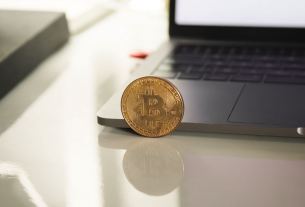When it comes to robots being integrated into the workforce, no other country does it better than Japan. From being restaurant servers to hotel receptionists, the Japanese seem to be very much at ease with the idea of robots taking part in their lives. So, it is not a surprise these smart machines are a target of issues, particularly when a Tokyo hotel revealed that its in-room robots were possibly hacked. Questions were pooled about the security of other machines, like those in the food industry. But nowadays, other robot manufacturers come to the market.
Robots: Are There Risks?
Since they were introduced, robotic vending machines like Reis & Irvy’s have been a good choice for food stores for their frozen dessert offerings. The idea of a robot serving your ice cream or sorbet surely is amusing, but one question remains: what are the risks of letting technology take control over your food? Is it secure? What about hacking?
Well, knowing someone has hacked a frozen dessert robot just to learn your favorite ice cream flavor is not something to be really worried about. The bigger issue that needs your attention is how your data is utilized in the food industry.
Technology is ever-evolving and the cost of labor continues to surge, leaving us with no choice but to take on the risks that come with it. Food technology revolves around data collection – who bought what, where, at what time, how much, how was the weather, and was the process convenient?
In this industry, the collection of data and what is done with it is seen as the biggest risk in relation to hacking and the security of machines. Especially that most of the time, consumers do not know what is in for them when they sign up for something.
Let’s take a look at the food supply chain – from agriculture, processing and manufacturing, packaging, and delivery. Have you noticed how artificial intelligence and robots are taking a greater role in every step?
It is no secret that technology makes operations speedier and more efficient, but like any other automation, there are risks involved. Such risks include errors and mischievous hacking, which can result in your collected information becoming public.
AI and Your Food: The Benefits
With every decision comes risks, so why not we highlight the benefits of using AI and robots in the food industry as well?
Over time, there is no way for robots to go than be smarter and more advanced, offering various benefits and advantages to food companies. In fact, nine out of 10 companies that process and package food use robots to enhance food safety, minimize employee injuries, and improve efficiency.
So, how does robotics and AI benefit the food industry?
- They enhance product consistency.
Unlike human workers, robots are designed to work even in harsh environments, including extreme heat and cold conditions and the absence of oxygen. This enables robots to maintain the quality and consistency of food products.
Further, food robots help in waste reduction and raise overall yield by providing more consistent results. An example of this is the cutting measures of meat products, where precise cuts are usually the difference between labeling products and spoiled meat.
- They add functionality.
AI does not mean artificial intelligence for nothing. Innovations can take the abilities of robots far beyond those of an operator. While a robot can track packages, it does not stop there. Some promote safety and sanitation, others take more precise numbers during production.
- They improve worker safety.
There are times workers need to use dangerous equipment to do the job, exposing them to safety risks. Robots, on the other hand, eliminates the need to employ human workers, thus making the environment and operation safer.
- They boost productivity.
Robots can perform repetitive, intensive tasks even in a non-conducive environment. When there is a shortage of workers, robots can enter the scene.
- They offer more convenience.
As lifestyles change, so do the needs preferences of consumers and producers. Customers look for more comfortable food packaging, while companies look for more flexible ways to produce and pack multiple orders.
Additionally, AI and robots allow food manufacturers to track the demand for products and of consumers. After analyzing the collected data, the manufacturers will then produce products according to the demand.
This shows that by being able to determine food production, transportation, and delivery steps, food companies have a lot to gain. They are better able to monitor operations, including food safety and sanitation and the details of shipment and delivery, which in turn produces efficiency and helps them create a smarter experience for consumers.
Through a smart scheme of integrating AI and robotics, the food industry is able to gather a lot of information about customers, such as what they want now or later or at different times of the day.




